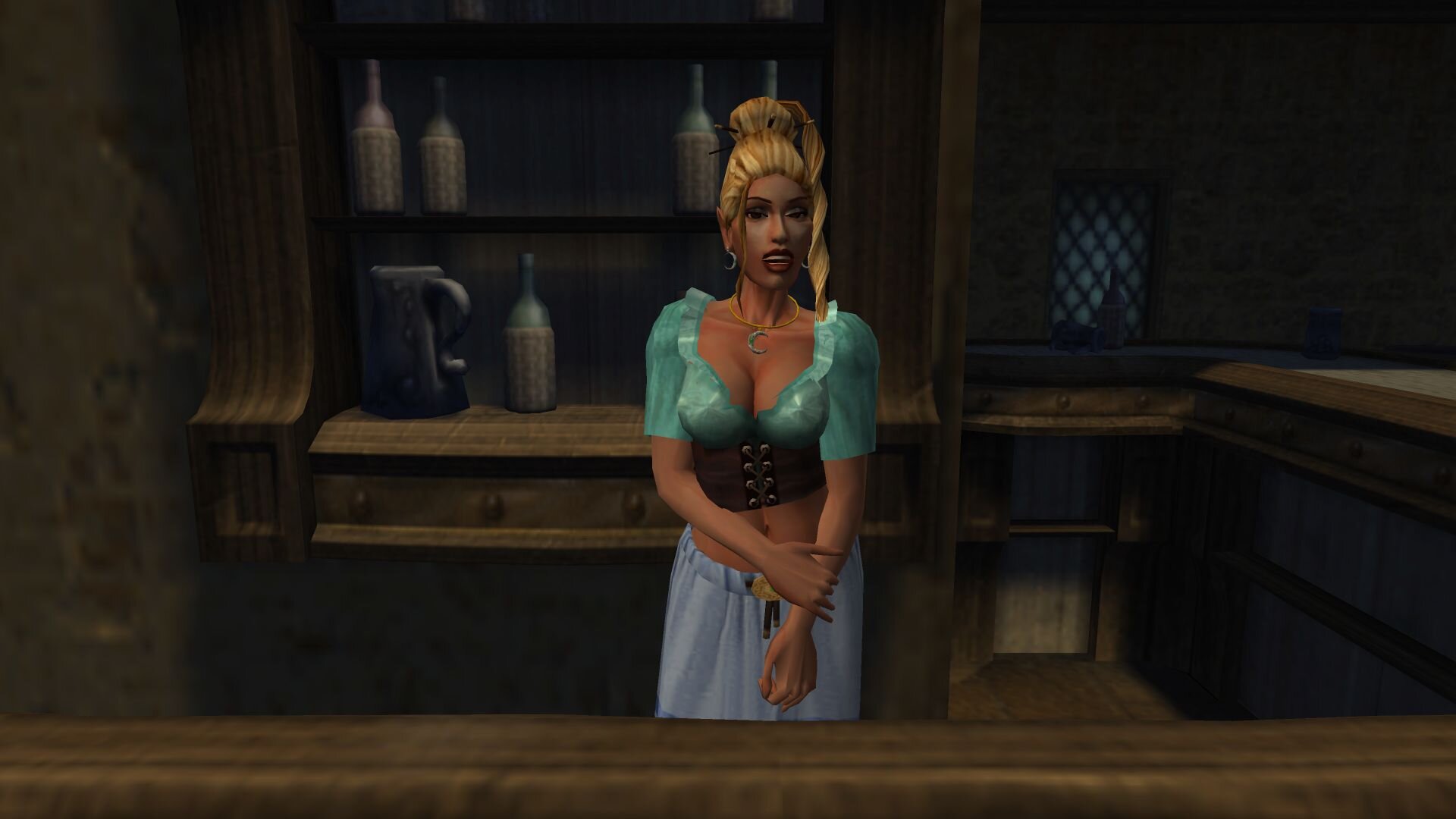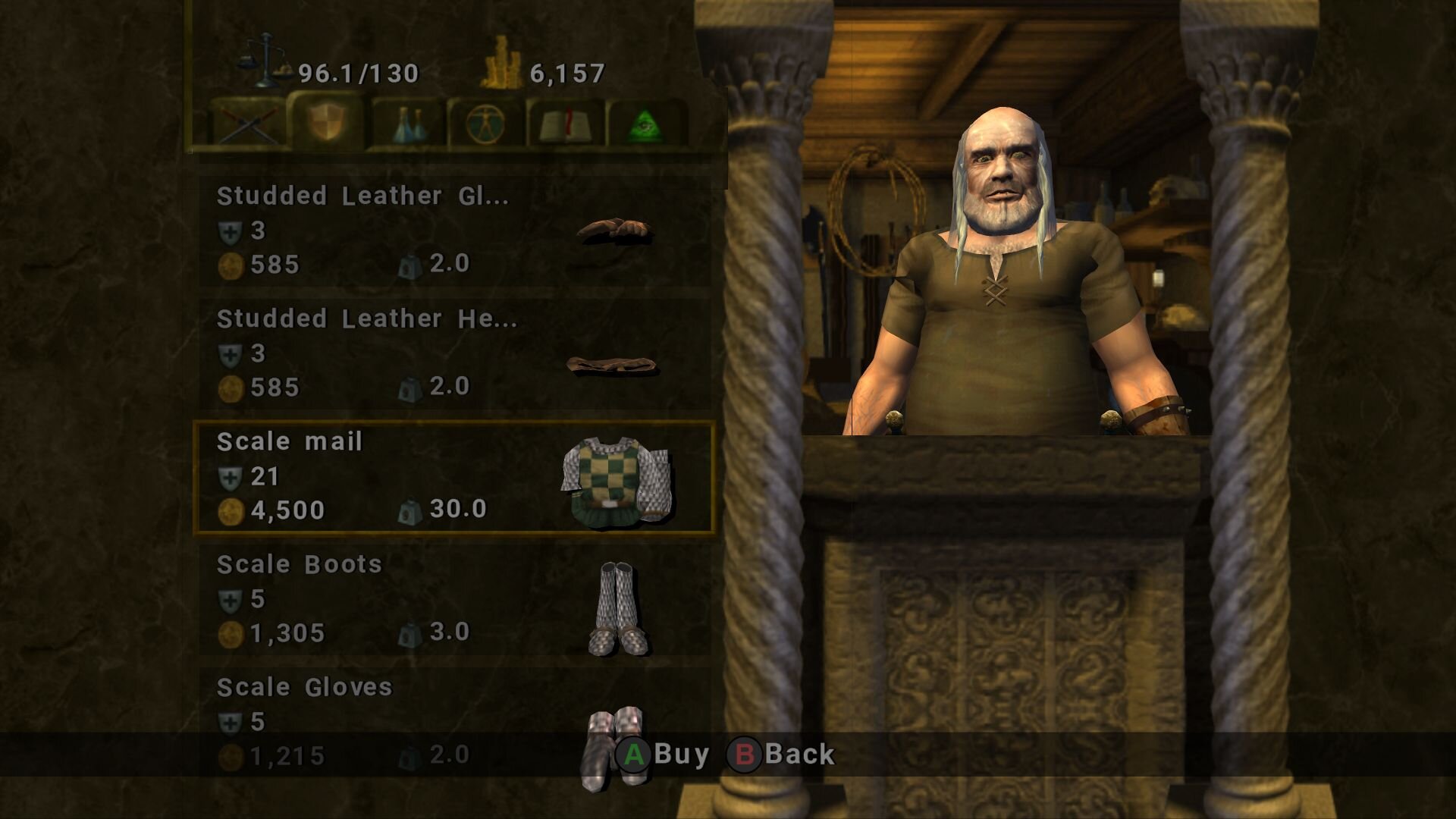“I’m not strong enough to carry that..”
When it comes to any video game, regardless of it coming from a big-name publisher or a little-known Indie studio, expectation plays a huge factor in how you'll perceive the final product. Going into a game informed and educated can often give you the information on whether you'll be interested in it, or put off of it entirely. When it was announced that the digital re-release of Baldur's Gate: Dark Alliance was simply going to a 4k up-res of the original 2001 game, I was both excited and yet extremely cautious, as several games from that era simply don't quite hold up after 20 years.
With the upcoming reboot of Dark Alliance a month away, a game that will shockingly debut day and date on Xbox Game Pass for console and PC, it feels like a no-brainer to see this re-release happen, even if I wish this was a two-pack remaster with its much-improved sequel. Announced a day before it hit digital storefronts, and at a fairly steep 38.99CAD (29.99USD), this 20-year-old game is exactly as it was, simply seeing its gameplay visuals bumped to 4k resolution and wide-screen formatted for modern TVs. Now, don't get me wrong, Dark Alliance, its sequel, and its spiritual successors in the Champions of Norrath series are some of my favorite games ever made, a genre that is still to this day, my kryptonite when it comes to video games. That said, Dark Alliance has simply not aged well, with several mechanics and systems that greatly hold the game back from today's standards.
Dark Alliance is an interesting case for reviewing as apart from its resolution boost and widescreen support, the game is as it was 20 years ago. This means that any glitches or cheats that were present back then, are here today. So yes, the duplication glitch is here in all its glory. So, how do you review a game that is by all accounts a product of its era? Games like Destroy all Humans! Or Nier Replicant were aged in some of the same ways, but the developers of their recent re-remasters/remakes were able to capture what those games felt like in our imagination and tweak the gameplay and visuals to suit that memory, making those games feel drastically better than they actually were, and look like they were released today.
So, in some ways, reviewing Dark Alliance is like taking my PS2 copy, (which is on my shelf) placing it into my PS2, attaching my upconverting HDMI cable into it, and seeing how it holds up today. That comparison is not exactly fair, but that is more or less what this is. While it is certainly a shame this isn’t an actual remaster, or even a partial remake, I personally have to take the game for what it is, as opposed to something it clearly isn’t meant to be. I also have to take in mind that it’s been almost 20 years since I’ve last played it, and like anyone, my gaming sensibilities have changed over the past two decades, so my takes on older games, even some of my favorites, have changed dramatically. That said, I enjoyed a lot of my time revisiting with Dark Alliance, but man does it not hold up in a lot of key areas.
Dark Alliance was the first Dungeons and Dragons game to not only be a traditional real-time hack and slash experience, but it was also the first real-time game to use the 3rd edition set of rules, which released only a year prior to the game’s debut. It was also the first Baldur’s Gate game to release on home consoles instead of PC. It featured a new 3D engine that was almost ahead of its time, with review outlets praising the game, its engine, and the visuals it was able to render. The game featured a series of rotatable environments, instead of something that was pre-rendered with the viewpoint locked. While some of the environments oddly don’t allow for that rotating, it was still an impressive feat at the time. The game featured co-op, a vast assortment of enemies with unique animations, large sprawling environments, and was even ported to the Game Boy Advance of all things.
While the game does have some structure of a story, at least through your conversations with certain NPC’s, your character, who can be an archer, fighter, or sorceress, sort of falls into it as its savior, initially being attacked as they enter Baldur’s Gate. After being saved by the City Watch, you retreat to the Elfsong Tavern, to learn about the identity of your attackers, and to then track them down. It’s here where you’ll get your “kill the rats in my cellar” quest that will eventually spawn into a quest to save the land. The story takes place over three acts, each loaded with several interior and exterior environments, challenging boss encounters, all dressed up with popular voice actors of the time such as Jennifer Hale, who would later go on to play Female Shepard in Mass Effect, and Michael Bell, who was Raziel in all three of the Legacy of Kain games. The game even featured John-Rhys-Davies, known for his work on the Indiana Jones movies, and a personal favorite of mine, Sliders.
Released so early into the isometric hack and slash genre on consoles, the combat is pretty basic but still enjoyable. You can have two weapons equipped, swapping to them with the D-Pad, as well as a similarly selectable magic skill, such as fire erupting from your hands, or shooting out what is effectively force lightning, watching it bounce from foe to foe. I did find many of my swipes to feel like they weren’t connecting, and enemies won't react to getting hit, so while you'll be unloading various attacks and spells, they will continue to perform their combat animation, sometimes trouncing you with multi-hit attacks or some enemies that seem to be able to one-shot you, no matter your armor level. I’ll also point out that the game’s difficulty can also feel tailored more for the game’s local co-op (which is its only multiplayer option) as some of the larger enemies you’ll be surrounded by can take a lot of hits before they fall, even being equipped with the best weapons that act can offer.
Now, I want to stress again, reviewing a 20-year-old game is sort of a challenge, that while I adore this game with almost every fiber of my being, the modern gamer in me is frustrated at a lot of what is still here, so while I may come across as being somewhat negative in many of my observations and critiques, It's merely my modern sensibilities here ruling over my likes and dislikes of games now, knowing full well this game's age can’t defend itself with patches or additional work done to it. That said, let’s talk about what doesn’t hold up.
Inventory is a major issue since all potions, and arrows, have a weight given to them. Now, when I entered act 3, I purchased the best gear I could once I found the lizard shopkeeper in the swamp. My total carry weight with my weapons was 95 pounds, out of the 140 pounds I could carry. This meant that all that extra space that I had, would have to be reserved for health and mana potions, which weighed 1lb and 2lb’s each, respectively. This left me with very little room for any arrows, less I keep using recall potions to go back to the shop, which I often had to do. Having a fully packed inventory meant I could rarely pick up any items to sell, which almost anything I was picking up was designed solely for that purpose since there was no way the 2-6 damage daggers I kept finding were going to be of any combative use for me this late in the game. I also found that I would rarely find anything related to my level or that act’s challenge, meaning that If I wanted any sort of decent weapon or useful armor piece, I had to buy it.
From a visual standpoint, there is little here that is made better by the bump to 4k. Character models are certainly sharper, but much of the zoomed-in shots during conversations are framed in incredibly blurry textures, and the character select screen and all cutscenes are still in their original resolution, meaning they don’t hold up, especially that select screen. I also found that I could see the stitching lines in a few environments, showing me where parts of the level were connected to what. It’s not a huge gripe, but loading up the PS2 version and visiting that area, I couldn’t see those same lines. Audio is as it was, with a collection of voices that were popular at the time, and a score, when present, that is more or less decent. Some levels have absolutely no music, and I lost audio almost 4 times, forcing me to save and restart my game to get my audio back. I also noticed that the AI feels far more aimless now, and while I don’t know if it’s a bug, every single group of enemies, or the townsfolk in the streets, would be walking around in a circle, constantly, as seen below.
You spin me right round baby, right round... pic.twitter.com/zxnGF4Xxfv
— Jeff Young @ Analog Stick Gaming (@Nekrowmancer) May 18, 2021
Dark Alliance is still, at its core, a fantastical romp of fantasy hack and slash that just simply hasn't aged well in many areas, but still offers a wealth of nostalgia in what it does that I still immensely enjoyed my time with it. However; its current price is where I am still on the fence for it being a “buy it now” recommendation, mainly due to this being a 20-year-old release with very little work done to alter it for modern audiences. Had this seen even the tiniest bit of work done to address its outdated textures and inventory management woes, or even been packaged in its current state alongside its sequel, I’d have very few issues here preventing that recommendation. Still, if the price isn’t a concern and you have the ability to play co-op and can endure some old gameplay designs and janky mechanics, then certainly take a trip to Baldur's Gate as it's in need of some saving, or at least, that's what some guy at the tavern told me. Oh, and mind the cellar, it’s filled with giant rats.
Developer - Black Isle Studios. Publisher - Interplay Entertainment Corp. Released - May 7th, 2021. Available On - Xbox One, Series X/S, PS4/5, Switch (May 20th). Rated - (T) Blood, Use of Alcohol, Violence. Platform Reviewed - Xbox Series X - No native Series X version. Review Access - A review code was provided by the publisher for the purpose of this review.












